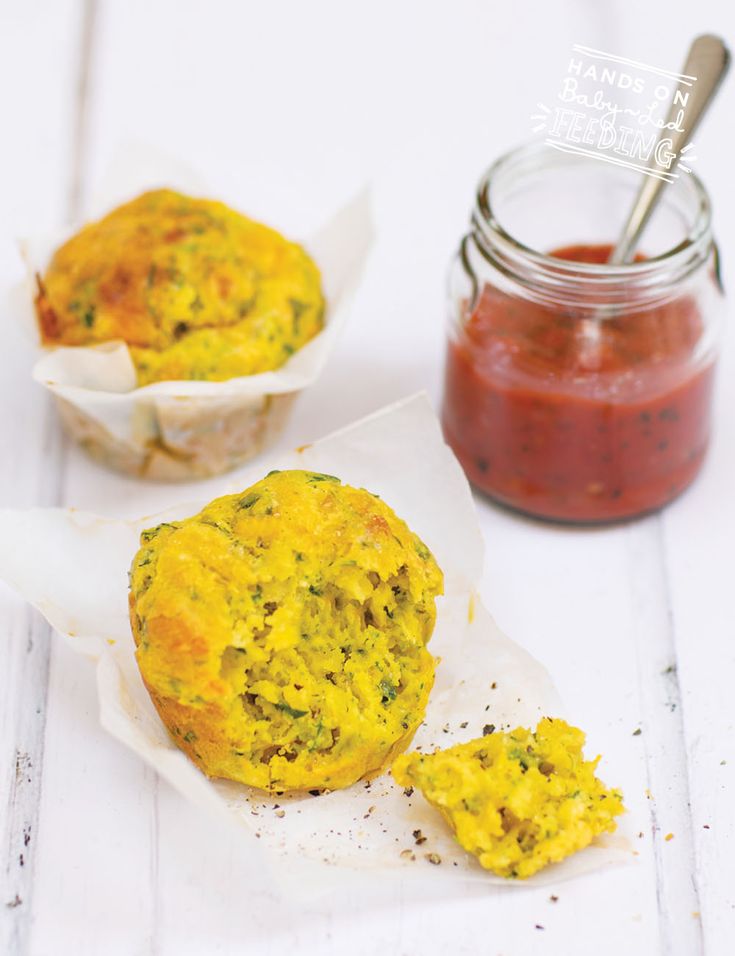Feed your baby games
Games for Babies Ages 4-6 Months Old
Resources by Age:
It’s never too early to start playing games to help your child reach their sensory, communication, feeding, and motor milestones.
Jump to Topic
- Week 14
- Week 15
- Week 16
- Week 17
- Week 18
- Week 19
- Week 20
- Week 21
- Week 22
- Week 23
- Week 24
- Week 25
- Week 26
- Want games in your inbox?
Games to Play
- Blow Raspberries: Before dressing baby, press your lips on their tummy and blow air on their skin to make a noise.
The sound and funny feeling will make them smile and giggle. This encourages baby to make their own noises and lip movements, which is good practice for babbling and copying sounds. Helps baby build communication skills.
- Put on a Show!: Do something silly in front of baby! Dance the YMCA or act out the movements and sounds of your favorite animal. Baby should be laughing out loud. Helps baby learn to focus their attention and follow moving objects.
- Supported Stand: Hold on to baby’s trunk in a standing position on your lap. Lift them slightly up and down to help them try to put weight on their feet. Helps baby learn what it feels like to stand.
Games to Play
- Copy-Cat Chit-Chat: Encourage baby to make noise by responding as if in conversation. Repeat sounds they make and add new words.
 Baby will learn the give and take of communication and may begin to babble sounds from words they've heard you say. Helps baby develop communication skills.
Baby will learn the give and take of communication and may begin to babble sounds from words they've heard you say. Helps baby develop communication skills. - Teething Time: Give baby teething rings that have different textures, e.g. bumpy or smooth. Gives baby a new sensory experience.
- Roll Baby Roll: Lie down next to baby and put them on their side, supported by a rolled-up blanket. Talk so they reach for you until they roll over. Clap when they do! Roll baby back gently so they keep rolling. Helps baby strengthen core muscles to prepare for future milestones.
- Rattle Shakes: Keep playing with rattles and encourage baby to reach for them. Try placing the rattle above baby’s chest, between knees, and out to the sides. Don’t forget to let baby shake it! Helps baby develop motor skills by encouraging them to reach for toys and hold them.
Games to Play
- Toy Challenge #1: Hold baby on your lap.
 Try to get them to reach for a toy. Help them switch the toy from one hand to the other. Helps baby work on hand-eye coordination.
Try to get them to reach for a toy. Help them switch the toy from one hand to the other. Helps baby work on hand-eye coordination. - Texture Time: Let baby touch fabric with different textures such as wool and velvet. Use a different word to describe each one to him: “soft”, “rough”, “smooth”. Baby won't understand the meaning, but it's still good to expose baby to new words. Helps baby learn about the world around them through their sense of touch.
- Elevator Fun: Pretend baby is riding in an elevator. Lie on your back and hold baby steady with your hands. Slowly push them up in the air. Say “Ding!” once you get to the top. Then lower baby back own and “Ding!” again when they reach the ground. Helps baby build strength with Tummy Time.
- Yakety Yak: Encourage two-way communication. When baby coos or babbles be sure to respond and take turns “talking.” Helps baby learn that language goes back and forth.

Games to Play
- Toy Challenge #2: Show baby a favorite stuffed animal. Help them to touch it. Ask what it could be. Then tell them what it is. “It’s a kitty!” Helps baby use sense of touch and follow objects with eyes.
- Action Songs: Count and wiggle baby’s fingers and toes as you sing "This Little Piggy" or clap baby's hands and feet together while you repeat "Pat-A-Cake." Repeating rhymes teaches early language skills. Helps baby build awareness of their body and practice communication skills.
- A Song to Move the Job Along: Narrate what you’re doing as baby watches you. Say, "open and close" using doors, cupboards, toys with lids, and dishwashers. Make up a song about it as you go: “Open and close it, clap, clap, clap” (clap your hands). Helps baby learn there are words used to describe actions and objects.
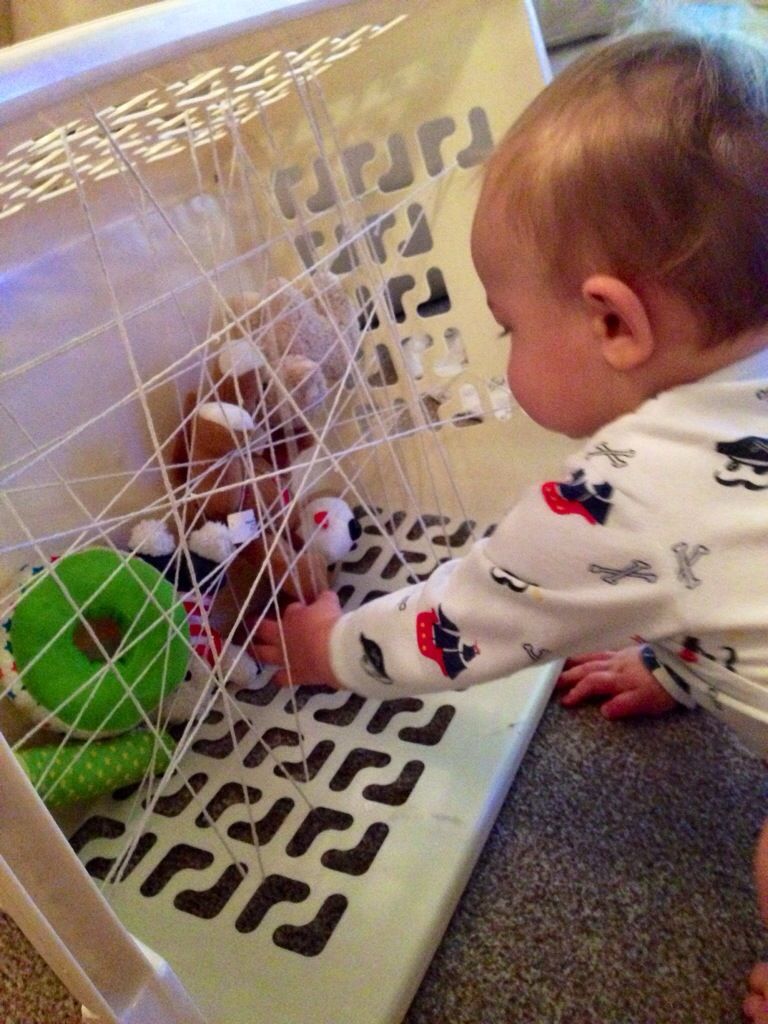
- Act Out: Make baby’s toys come to life! Act out simple stories with baby’s toys and stuffed animals. Helps expose baby to new sounds.
Games to Play
- On and Off: Show baby how to turn things on and off including, lights, water faucets, etc. Repeat “On!” or “Off!” each time. Try this with a flashlight too. Baby will enjoy watching the light move around the room. Helps baby learn new words and sets the foundation for understanding cause and effect.
- Rock and Roll Over: Baby may be rocking back and forth on tummy or rolling on the floor as he gains better control over his movement. Encourage baby to continue rolling by holding a toy out for them to reach during Tummy Time. Helps baby build muscles to roll from tummy to back.
- Tummy Time Peek-a-Boo: Play peek-a-boo while baby is on her tummy.
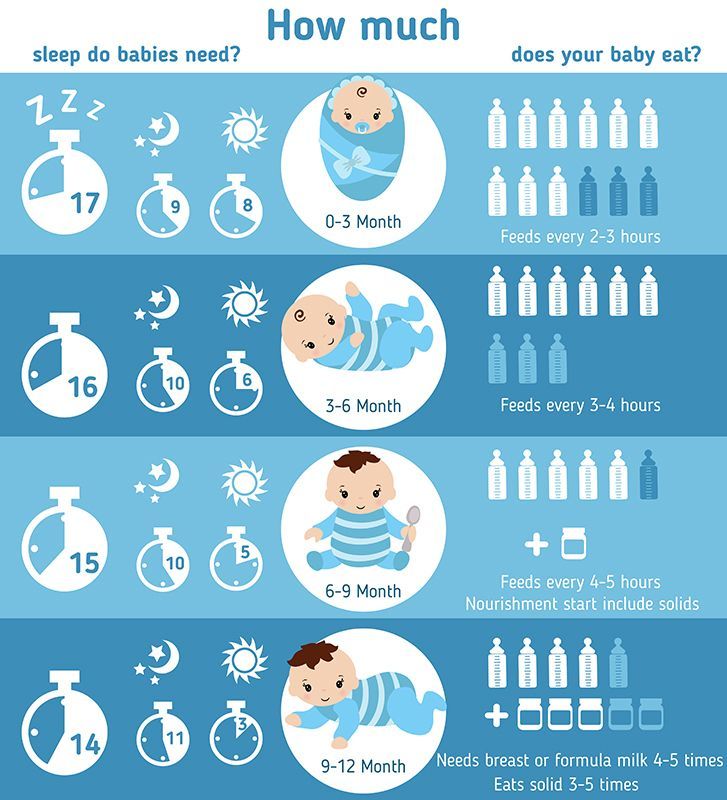 Cover your face with your hands. Surprise baby when you appear again. When you reappear, say her name and give her a wide smile. Helps baby become playful while improving core strength during Tummy Time.
Cover your face with your hands. Surprise baby when you appear again. When you reappear, say her name and give her a wide smile. Helps baby become playful while improving core strength during Tummy Time.
Games to Play
- Lifting Up and Down: Try this form of exercise with baby. Lift baby up high above your head and bring them back down low. Helps baby develop their sense of balance and body position.
- Play Ball!: Find a ball designed for babies with different textures. Hand baby the ball and see what they do with it. Show different things they can do: roll the ball, drop it in a box. Helps baby develop motor skills and explore textures.
- Light Moves: Place baby on your lap sitting upright and lightly move your knees up and down and then side to side. Make sure to hold on to baby! Helps baby experience new types of movement.
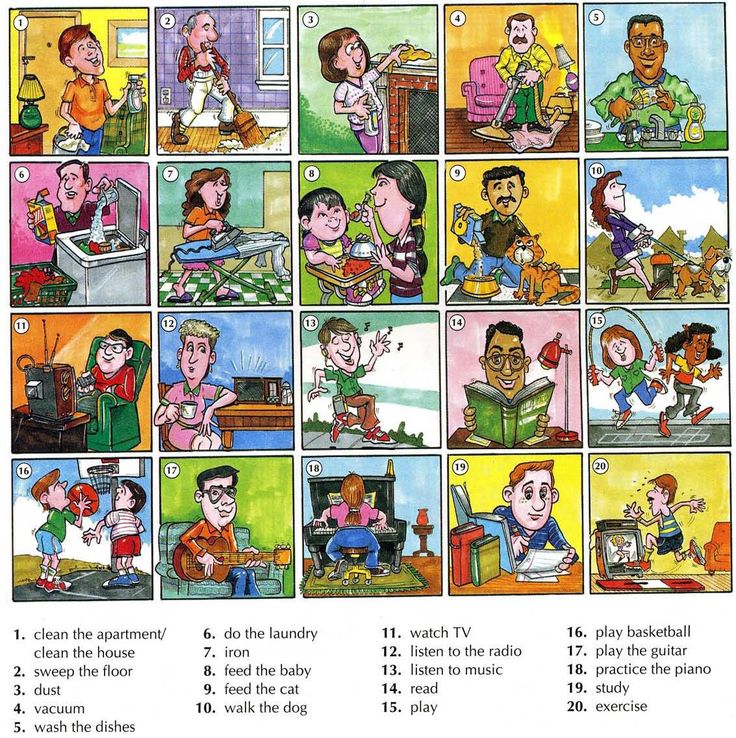
Games to Play
- Body Massage: After a bath or during changing, gently massage baby from top of head to bottom of feet. Massages are good for all babies. Helps baby bond with you, use their sense of touch, and use their vision to focus on you.
- Noise Makers: Give baby toys that make noise. Baby is starting to learn cause and effect. They may start to shake, drop, or bang toys together. You can give baby household items like pots, pans, spoons, etc. Helps baby learn to play with toys in different ways to see how they move and sound.
- Ten Toe Surprise: Baby has probably found his feet and spends long stretches of time reaching and playing with them. Try touching their toes, saying a number for each one, or singing "This Little Piggy". Helps baby learn to focus attention while using his eyes to follow your movements.

- Yummy in My Tummy: As your baby begins to eat solid foods, talk to baby about their pureed food while you feed them, “Yummy bite of squash!” Helps baby develop language skills.
Games to Play
- Smooth Tummy Ride: Place baby tummy down on a thick towel and grasp the corners. Slowly circle around the room, basing your movement on baby’s level of comfort. Do this activity on a soft surface, like carpet, free of toys and household items. (Make sure they can hold their head up.) Helps baby improve neck and head control and strengthens back, shoulder muscles and core.
- Sightseeing with Baby: Place baby in a carrier or baby wrap while you vacuum the floor or tidy up the house. You get chores done and baby has fun moving around the house with you. Make sure baby is safely secured. Helps baby develop sense of balance and body position, and gives baby new opportunities to see their surroundings.

- Roll Me!: If baby is not able to fully roll over on their own, help them by holding one leg and slowly guiding them through the motion of rolling onto their tummy. Switch directions so they can practice rolling to both sides! Helps baby learn to roll over.
- Ring Around the Tosies: Gently place a small ring toy around baby’s foot and lift foot into baby's view. Encourage baby to reach for it. Helps baby work on hand-eye coordination and core strength.
Games to Play
- A Solid Move: Introduce Stage 1, smooth purees after you have breast or bottle fed baby. To help transition, end the meal with some more milk or formula after baby has tried some solids. (Consult baby’s healthcare provider about starting cereals and pureed foods.) Helps baby develop feeding skills.
- Swipe Away: Encourage baby to swipe at objects held in front of them.
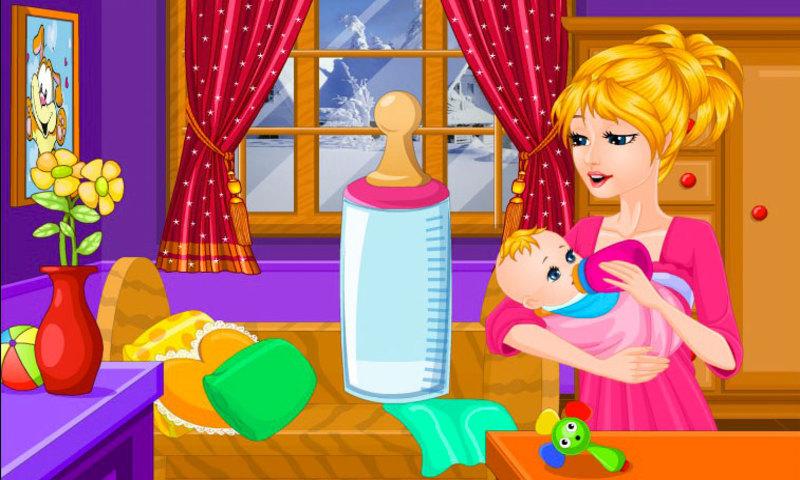 Have baby practice “raking” movements by letting them use their fingers to grasp and pull objects. Hold the item in different positions to encourage reaching from side to side. Helps baby develop motor skills.
Have baby practice “raking” movements by letting them use their fingers to grasp and pull objects. Hold the item in different positions to encourage reaching from side to side. Helps baby develop motor skills. - Messy Eater: Baby may be a messy eater at first, that’s ok! Let baby touch and play with their food to feel all of the different textures. Helps baby learn about different food textures.
- Little Chef: Baby is probably already in their highchair while you’re cooking, try making your time in the kitchen a learning experience. Let baby smell the foods you are cooking and talk through what you are doing. Helps expose baby to new sensory experiences.
Games to Play
- Taking the Spotlight: Baby should recognize familiar caregivers, try to get their attention, and engage with them.
 During calm moments, walk back and forth slowly past baby then smile and talk to baby if they try to get your attention. Helps baby learn to communicate with you by making sounds and using gestures.
During calm moments, walk back and forth slowly past baby then smile and talk to baby if they try to get your attention. Helps baby learn to communicate with you by making sounds and using gestures. - Sit On Up: Place baby in sitting position on the floor with their hands in front of their legs so they can push themselves up using their arms. Baby’s back may look rounded in this position. Don’t worry, baby’s back will become straighter as they get stronger. Helps baby learn to support themself in sitting.
- Roll Away: When baby learns to roll over on their own, lay down or wave a toy a little bit away from baby to see if they'll roll over to get it. Helps baby develop core muscle strength.
- Fun Faces: Make different faces at baby. Smile, frown, or stick your tongue out. Let baby touch your face and explore your nose, mouth, and other features. Helps baby learn to focus his eyes on objects.

Games to Play
- Winding Up: Play with toys that move. All curious babies love a jack in the box or a wind-up toy that makes repetitive movements. Helps baby develop visual skills.
- Break Out the Board Books: Baby loves the sound of your voice while you read and the colors and shapes in books. Mix it up by reading in different locations or during Tummy Time. "Reading" can also be describing pictures without following the written words. Helps baby develop vision and listening skills.
- Nature Walks: Go for a walk outside and let baby hear the sounds around them. Helps expose baby to new sensations.
Games to Play
- Sit Up Straight: Support baby’s back to help them sit up.
 Look at a book with baby in this position. Helps them strengthen muscles needed to sit up on his own. Make this more fun for baby by using funny noises while you read. Helps baby develop strength.
Look at a book with baby in this position. Helps them strengthen muscles needed to sit up on his own. Make this more fun for baby by using funny noises while you read. Helps baby develop strength. - Pureed Food: Try introducing new pureed foods to baby. Only serve one new food at a time and wait four days in case of allergic reaction before introducing another food. Be sure everything is thoroughly cooked and blended before letting baby try it. Helps baby develop feeding and swallowing skills.
- Chew On This: When baby cries from teething, offer a toy or blanket made for chewing. Helps baby soothe during teething.
- Chatter Box: Talk to baby often to let them hear the sounds and rhythms of speech. Describe your actions throughout the day as you dress, feed, and bathe baby. Listen as baby responds to you. Helps develop baby's language skills.
Games to Play
- Household Hub-Bub: Use household items like squeeze toys or newspapers to make different noises for baby.
 Repeat sounds at different volumes and in different orders to keep them interested. Then give them the items and help them make sounds. Helps baby develop motor and listening skills.
Repeat sounds at different volumes and in different orders to keep them interested. Then give them the items and help them make sounds. Helps baby develop motor and listening skills. - Floor Explorer: Create a safe place on the floor for baby to explore. Engage with baby. Try holding out toys for them to reach while talking and using facial expressions. Helps baby improve neck and head control, strengthen back, shoulder muscles and core.
- Lean and Reach: While baby is sitting, place toys out of his reach so he has to shift his weight and move to get the toy. Helps baby develop motor skills.
- Feeding Tip: Try following a regular feeding schedule to help baby eat consistent amounts of food. Helps to make sure baby is getting the appropriate amount of food.
6-month-old baby games: first week
In this article
- Spoon landings
- Clap, clap your hands
Two fun games to play with your baby this week.
Spoon landings
At six months, your baby's probably enjoying a selection of foods. But it can be quite a challenge to get it into her mouth instead of all over her face! These fun food games may help you to get started.
Skills developed: being spoon-fed
What you'll need: a baby spoon
One great spoon-feeding trick is to surprise your baby, so that she sits open-mouthed long enough for you to feed her. While she may soon get bored of the old "aeroplane coming in for a landing" trick, there are lots of alternatives you could try.
For surprise value, try saying: "Rocket landing on the moon." Hold the spoon down below the table or highchair tray, as close to vertical as you can get without spilling the food everywhere. Quickly and carefully bring it up and gently place it in your baby's mouth just as you say: "Moon."
Alternatively, hold the spoon normally and bring it into your baby's field of vision as you say: "Here comes the racing speedboat. " Or try using an up-and-down bobbing motion and say: "Whale swimming in the ocean." A more dramatic swooping movement could be a leaping dolphin. Another classic favourite is to make a "chug a chug a whoo whoo" sound as you bob the spoon along, magically transforming it into a fascinating choo-choo train.
" Or try using an up-and-down bobbing motion and say: "Whale swimming in the ocean." A more dramatic swooping movement could be a leaping dolphin. Another classic favourite is to make a "chug a chug a whoo whoo" sound as you bob the spoon along, magically transforming it into a fascinating choo-choo train.
Clap, clap your hands
Around this time, your baby may be learning that she can make her hands touch each other, as well as the rest of the world. Even before she masters this skill, clapping games will probably give her a thrill. What's more, they give her a chance to spend time with you face-to-face and to try to mimic your actions.
Skills developed: two-hand coordination
What you'll need: no equipment necessary
Patty-cake is an old favourite for babies, but this version is a little more challenging. Sit cross-legged on the floor with your baby facing you. If she can’t sit up on her own yet, prop a pillow behind her. Then sing this song to any tune you like, acting out the commands as you come to them:
Then sing this song to any tune you like, acting out the commands as you come to them:
Clap, clap, clap your hands
Clap your tiny hands
Clap, clap, clap your hands
Clap your tiny hands
Additional verses:
Stomp, stomp, stomp your feet… (and so on).
Pat, pat, pat your head... (and so on).
Rub, rub, rub your tummy... (and so on).
Help your baby to make the movements herself, even if it means holding her ankles and gently stomping her feet for her. You can continue to make up sillier and sillier verses, such as wiggling your eyebrows or sticking out your tongue, as long as she continues to giggle.
Last week's activities | Next week's activities
Read more about your six-month-old's development.
Remember: Each baby develops at a different pace, so if yours isn't quite ready for this week's activities, don't worry. Just try them again in a few weeks.
Does your baby have a favourite game? Share it with other parents in our community.![]()
Proper childcare: play and feeding
Proper care is very important when playing and feeding. Children of all ages love to play with their parents. You can play with your baby anywhere: on the changing table, on the playground, on your lap while holding your baby, etc. You can play finger games or toys, sing songs, you can move with the child, dance and play with him when he gets a little older.
One of the famous, comfortable positions for feeding, playing, massage and just showing affection is the position when your legs form a ring. To do this, sit on the floor and connect the soles of your feet to each other. Now you can put your baby's head on your feet and continue caring for him:
Position on feet
It is quite comfortable to feed and change a child on your knees, but only if he is not too big yet. So you can cuddle and play with him. To properly position your baby on your lap, you should sit on the floor and place your baby on your hips:
Hip position
If you are tired of sitting on the floor, or you are uncomfortable, then you can, for example, get a special footstool to reproduce this posture, sitting in an armchair or on a sofa and placing your feet on this bench.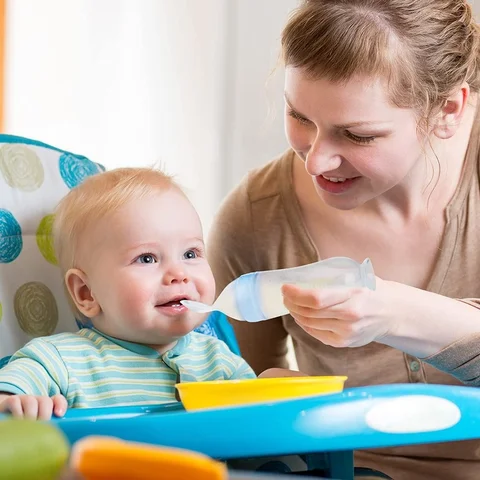 The main thing to remember is that the baby's head should still be comfortable and stable on your hips and not lean back behind your knees. nine0003
The main thing to remember is that the baby's head should still be comfortable and stable on your hips and not lean back behind your knees. nine0003
If you are breastfeeding, it is best to change your breastfeeding position regularly. At the same time, make yourself as comfortable as possible, then your child will also feel this comfort and relax. Breastfeeding is an individual dialogue between mother and child. There are many suitable and unusual positions for this which are not described here. If you require this information, please refer to the relevant literature. nine0003
Breastfeeding, like the rest of baby care, also requires changing the sides through which you interact with the baby. However, if you are feeding him with a bottle, hold the bottle in one hand and the baby in the other so that he does not have to turn his head. Feeding on your knees occurs in a symmetrical position - the child can easily eat porridge from a spoon.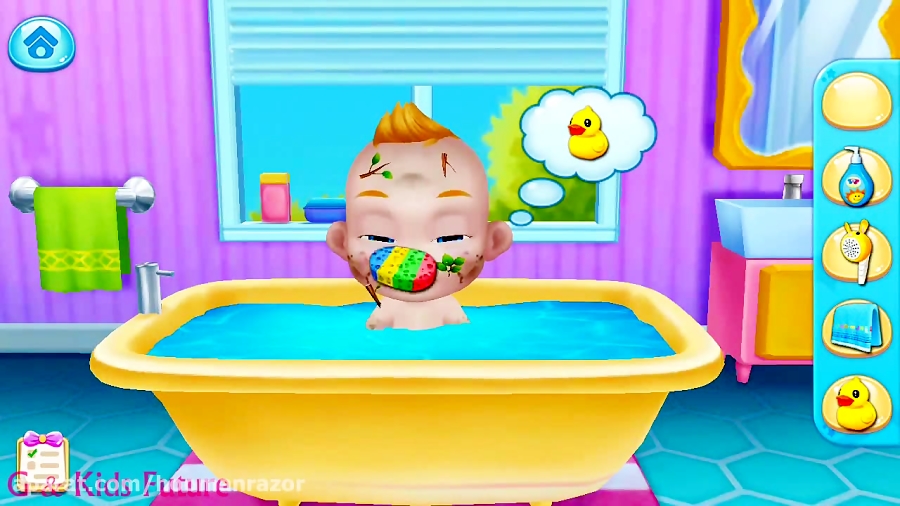
For feeding porridge, it is better to use a flat spoon made of plastic or metal, depending on which spoon the child is better at removing porridge from. Insert the spoon directly into the child's mouth and lightly press down on the tongue from above. Then he should be active and independently remove the porridge from the spoon with the help of his upper lip. Thus, the first chewing activity is started. You should not just remove the porridge from the upper lip of the child, while continuing to encourage and strengthen the suction reflex, your task is to teach the child to chew. nine0003
From the 6th month, the child usually begins to perform grinding movements with the lower jaw, i.e. learn to chew. To support this skill, you can let the porridge flow from the spoon inward over the cheeks. Then the child will begin to chew and try to pull the porridge out of the cheek pocket with his tongue. Then he presses the porridge with his tongue against the palate, in contrast to the sucking process, in which the tongue remains lower. Feeding, where the child takes an active part, contributes to the development of motor skills of the language, which, in turn, is a necessary condition for its proper formation. nine0003
Feeding, where the child takes an active part, contributes to the development of motor skills of the language, which, in turn, is a necessary condition for its proper formation. nine0003
For the same reason, you can gradually teach your child to drink from a cup from the age of 6 months. While drinking, the tongue should form a depression for the liquid. After the first year of life, it is harmful to use nipples or bottles with special nozzles, because they negatively affect the development of teeth, mouth and jaw. Again, they encourage the baby to continue sucking and chewing and swallowing skills are inhibited. In addition, the nozzle puts pressure on the first teeth, which can harm their proper formation and growth. The jaw joint is also subjected to adverse stress, as the mandible is constantly pushed back by the suction movement and malocclusion may develop. But this does not apply to cases when a child uses a drinking straw from the age of two, on the contrary, it has a beneficial effect on the motor skills of the oral cavity. nine0003
nine0003
0. Daily childcare (introduction)
1. Daily handling of the baby (handling)
2. How to carry a baby
3. Play and feeding
4. Dressing, changing diapers and bathing
5. Back position
6. Side position
7. Prone position
Children's games with food - is it possible or not?
— Anastasia Ivanovna, why do children start playing with food? nine0053
— Children experiment, learn about the world around them through play, and learning about food is no exception. Tactile sensations are very important here. Therefore, the child begins to play with everything that falls into his hands. At the same time, at the time of the game, he is full and does not want to eat.
— Can a child be allowed to play with food?
— Opinions are opposite: someone allows you to play with food, someone is categorically against it. Here it is necessary to take into account the age and health of the child. For example, with an autistic spectrum disorder, the baby is simply afraid of food and new products. In this case, he can be allowed to play with food so that he can get used to its consistency, shape, size, colors. nine0003
For example, with an autistic spectrum disorder, the baby is simply afraid of food and new products. In this case, he can be allowed to play with food so that he can get used to its consistency, shape, size, colors. nine0003
Mothers should be as attentive as possible to what the child plays, so that he is not cut off, not burned. And, for example, at one and a half to three years old, a child should already understand that food is food, not a game.
Opponents of food games say that everything will be dirty. Psychologists, on the other hand, believe that small children should dirty - they have such a goal: to leave their mark, to say that they are here. Therefore, kids draw with what is at hand.
How does food play help introduce new foods to your baby? nine0053
- You can come up with many games. Mom should be guided by age. They talk with kids about the color, shape, size of fruits and vegetables: these games develop logic well. With an older child - about where they grow, how they process, water vegetables and fruits. All available material is applicable for the development of cognitive abilities. However, if a child likes to play with food, it is important that he does not flirt, do not throw food and understand that this is food after all.
All available material is applicable for the development of cognitive abilities. However, if a child likes to play with food, it is important that he does not flirt, do not throw food and understand that this is food after all.
— Why can't you force a child to eat? nine0053
- You can get a backlash. Many studies are aimed at understanding the behavior of toddlers. And in most cases, children refused to eat because they were forced to eat, they were asked to finish everything from the plate, they were given portions commensurate with adults. It is not right. The volume of the child's stomach is the size of his clenched fist, and the serving on his plate should be the same.
- psychological - the child is not ready or does not want to eat;
- physiological - deviations in the state of health: for example, with a low acidity of the stomach, the child will not want meat. nine0082
There are many nuances - a mother can track them in a food diary and work in conjunction with doctors who will help her deal with the problem.
Read also
- Is it necessary to force the baby to finish eating, let him leave the food on the plate.
— Is it harmful for a child to play with food?
- Parents most often make two mistakes:
- offer the child to eat what he played;
- Forced to eat a child who is not hungry. nine0082
There was a case when parents told a child a fairy tale about a seed that smiles at the sun, grows and rejoices. Then the grain was boiled and the porridge was put on the table. However, the child refused it, because he had just heard that the seed was alive. Such inconsistencies occur when the parents themselves flirt too much and do everything so that the child eats the dish offered to him.
— How to explain to a child that you can’t play with food, and at the same time not kill his interest in new products? nine0053
— Personal example and pedagogical complementary foods will help here.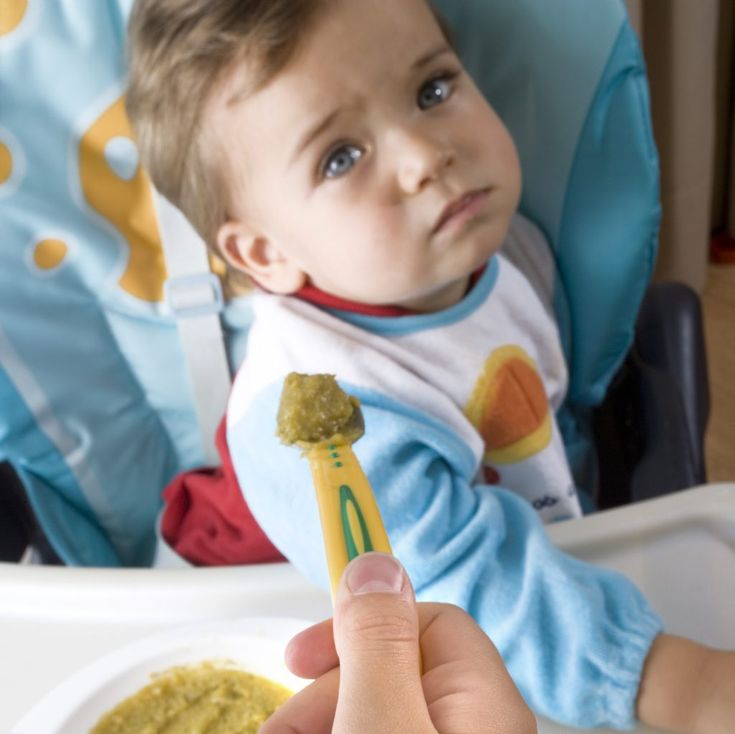 Let the child continue to play with the products familiar to him, but at the same time he also receives pre-fed foods - the minimum amount of other products per sample, not for saturation.
Let the child continue to play with the products familiar to him, but at the same time he also receives pre-fed foods - the minimum amount of other products per sample, not for saturation.
In addition, the baby can be emotionally motivated. If the child has tried or even licked the product, you should praise him and ask: how did you like it or not? More to go to the emotions, the state of the baby, to what he felt. Then you can easily negotiate with him. nine0003
- Can eating games be replaced by watching cartoons at the table?
— Cartoons are convenient for parents, because the child watches them, is silent and chews. In fact, this is abnormal eating behavior. When a baby watches a cartoon or plays a tablet, his attention is directed to them. He does not understand that he has eaten, and begins to overeat or undereat, throwing a plate. This leads to an overload of the entire gastrointestinal tract, to a failure in the production of hormones that are needed for digestion and the normal state of the child.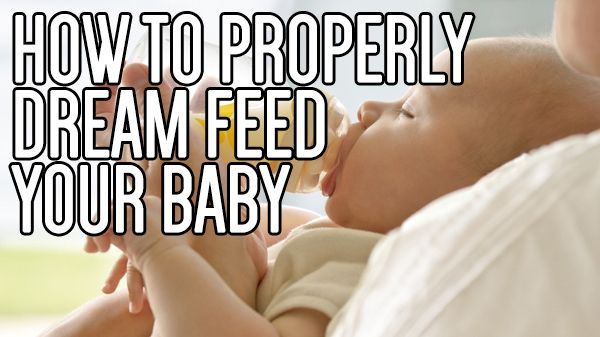 As a result, everything can end in obesity, or the baby will simply stop eating without cartoons. nine0003
As a result, everything can end in obesity, or the baby will simply stop eating without cartoons. nine0003
— What to do if the child no longer sits at the table without games and cartoons?
— To get away from food for cartoons, the baby's attention needs to be switched to food. You will have to play with it, but the main thing is not to get carried away with it too much. Parents need to be patient and keep their course on feeding without cartoons. Children know how to "push through" their desires - they will hysteria, cry, scream. And here it is important not to break.
Food play depends on the age of the child, but should always be supervised by an adult. This is for example:
- sorting by shape, size of vegetables, fruits;
- drawing food on your plate;
- patting, kneading food.
— Is it necessary to allocate a special meal for games with food?
- Playing with food in my understanding is when girls make beads from pasta, and in kindergartens, children make pictures from cereals. The game should not accompany the main meal - porridge and mashed potatoes when the child is hungry. When the concepts of "game" and "food" are divorced, this is more correct. The game develops fine motor skills and encourages curiosity about food. nine0003
The game should not accompany the main meal - porridge and mashed potatoes when the child is hungry. When the concepts of "game" and "food" are divorced, this is more correct. The game develops fine motor skills and encourages curiosity about food. nine0003
- I would like to hear the opinion of pediatricians about food games.
— Pediatricians mainly give advice on the balance of proteins, fats, carbohydrates, vitamins and minerals. The state of the body depends on the nutritional value of products. In addition, they suggest not to conflict and not to stop the game in a harsh manner. Otherwise, the child may experience psychological stress, and then this trigger will start to work all the time. Also important are the psychological state of the family and the agreement between adults about what is possible and what is not allowed for the child. nine0003
— Why do pediatricians and pediatric nutritionists disagree about food games?
— How many people, so many opinions.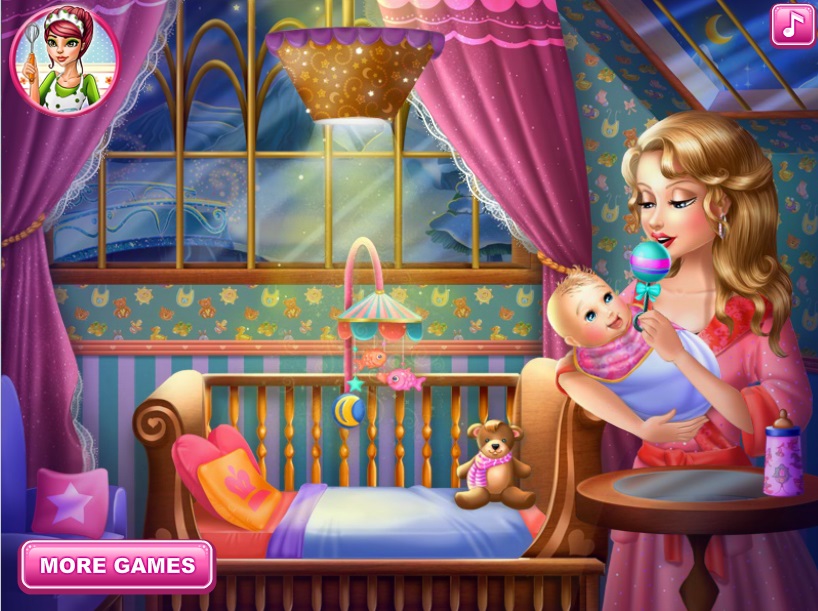 And everyone has different goals. To get energy, vitamins and minerals from food, meals must be complete. Games with food at the table are connected in order to develop interest in products. But it doesn't have to be a permanent tactic. Everyone strives to ensure that the child develops correctly and understands that at the moment he is eating and not playing.
And everyone has different goals. To get energy, vitamins and minerals from food, meals must be complete. Games with food at the table are connected in order to develop interest in products. But it doesn't have to be a permanent tactic. Everyone strives to ensure that the child develops correctly and understands that at the moment he is eating and not playing.
Toddlers who play with their food are more likely to try new foods and eat a variety of foods. But it is important to separate games with food and eating directly. If the child has begun to play, parents can adjust to him. But one child will make pyramids of pieces, and the other will knead the food in his hands, spread it on the table and be pleased with it. Every family has its own limits. While feeding, it is better not to watch cartoons. The child may either not finish eating or overeat, and this leads to malfunctions in the gastrointestinal tract. But games with food as an element of pedagogical complementary foods help prepare the child for eating adult food.






